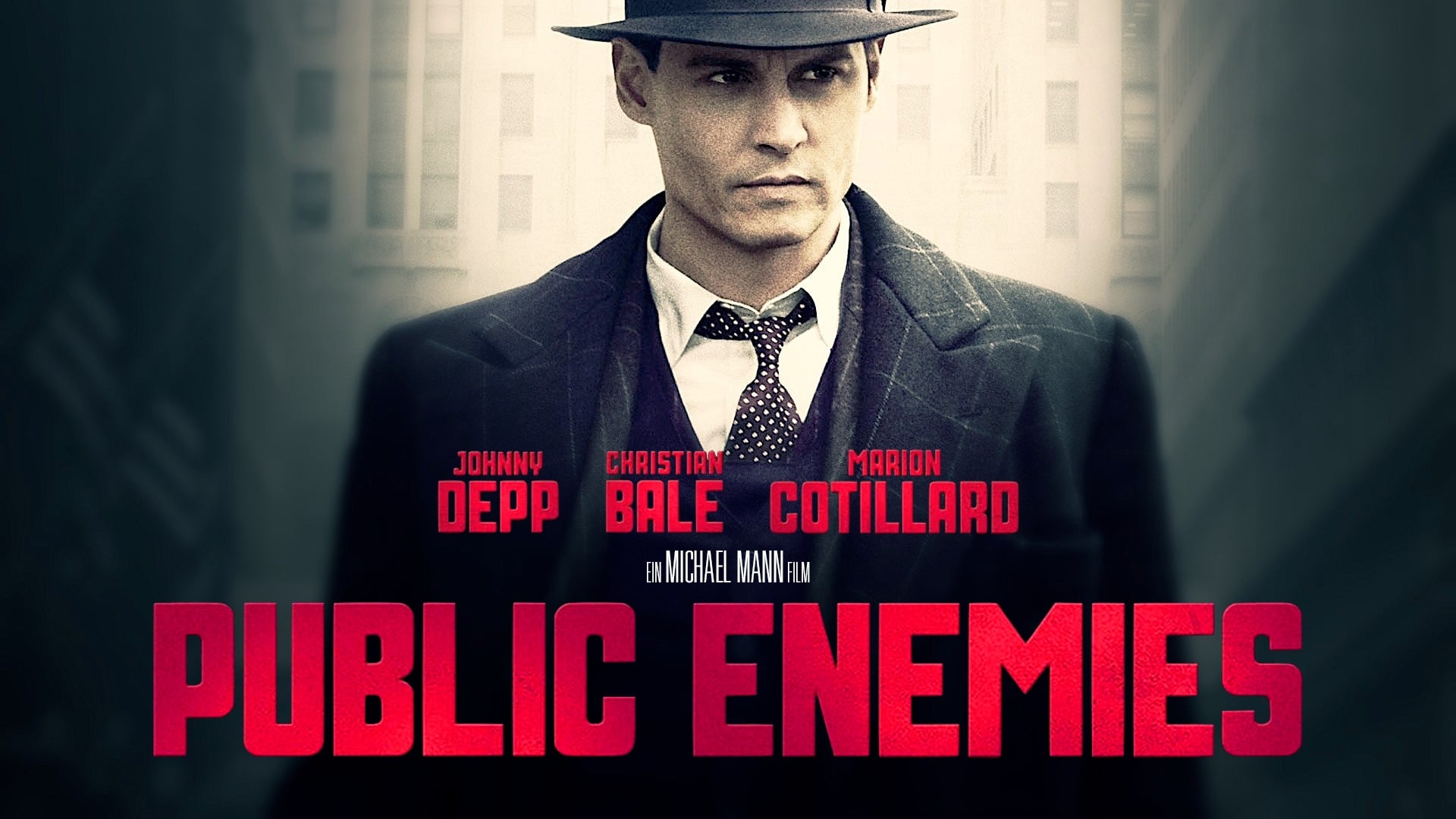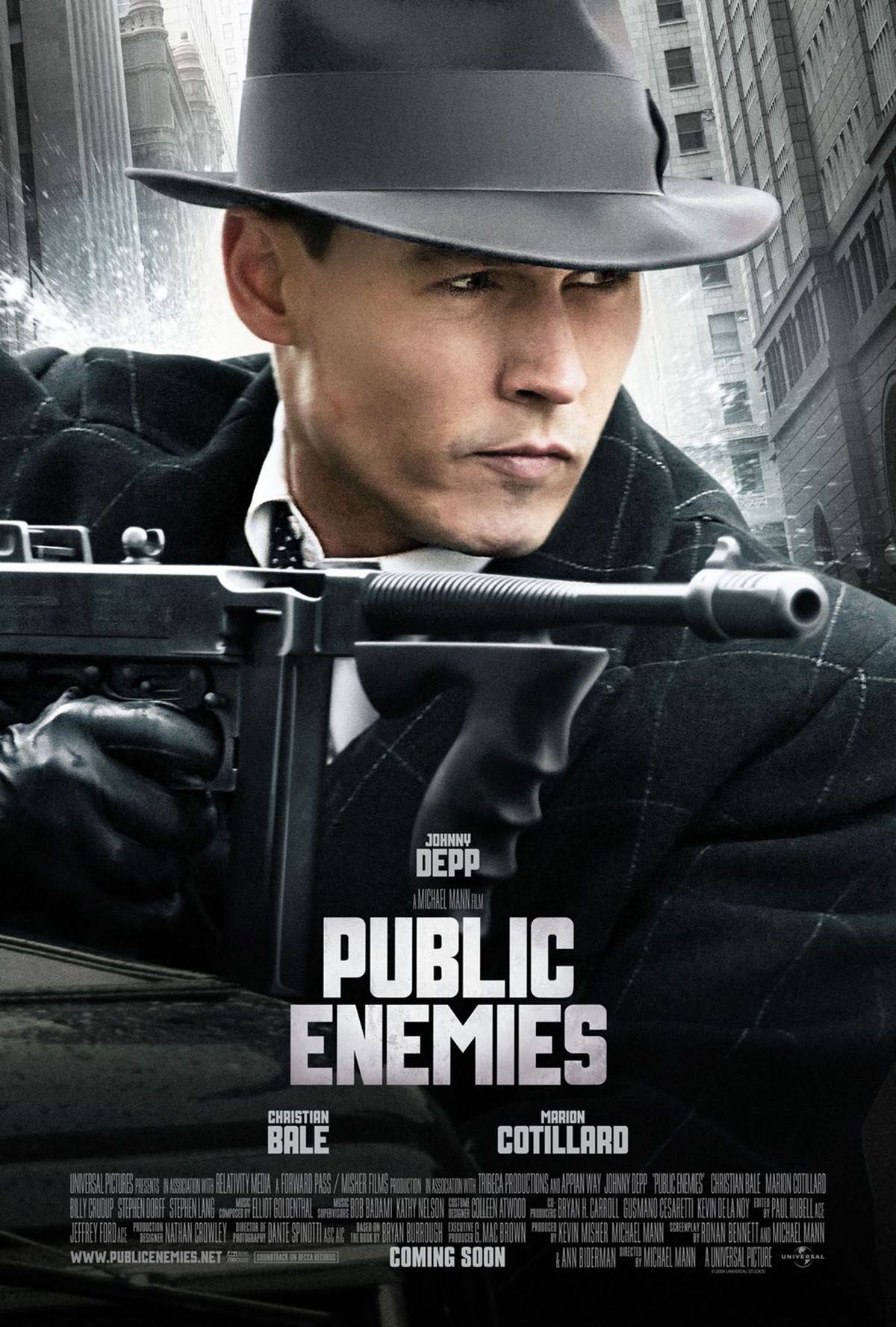
Edgar Hoover (a terrific Billy Crudup, his neck thickened and delivery clipped), ignored Dillinger, deeming him a state problem. agent who doggedly, if often ineptly, led the hunt for America’s most wanted. The story centers on two dramatic antagonists, Dillinger and Melvin Purvis (a remote Christian Bale), the F.B.I. Among other things, they’re deeply serious (at times to the edge of parody), which is why they rarely pop.Īnd “Public Enemies” is nothing if not serious, a vividly realistic if fictionalized portrait of a country deep in depression and jumping with bad men.
#Public enemies cast tv#
Mann’s mainstream bona fides, notably with the 1980s hit TV show “Miami Vice,” and preference for muscular cinematic genres, there’s something resolutely noncommercial about his movies.


#Public enemies cast movie#
Mann’s movie with Tom Cruise, being exceptions). Mann makes big-budget art movies that because of their complex pleasures and ambiguities, don’t always hit the box office sweet spot (“Seven” and “Collateral,” Mr.
#Public enemies cast serial#
It also, perhaps in homage, mirrors a similar shot of the escaping serial killer in David Fincher’s “Seven.” Like Mr. It’s a seductive moment the bad man seems to be defying gravity, not just the law and much like the other action scenes, it gives the movie a jolt. Laying the blame elsewhere, he next tosses another man out of the moving car. Dillinger holds on until the man’s grip wilts, the dead body slipping away in one direction as the car races off in the other. Mann places the camera right next to the fallen man, pointing it up at Dillinger’s dark, ominous figure as he almost blots out that blue sky. Instead it’s followed by a striking short scene of a wounded escapee being dragged alongside the speeding car while Dillinger and another man struggle to pull him up. Mann goes in closer once the men enter the prison, where they help disarm the guards, and he pulls back again for the long view as Dillinger fires on the prison with a machine gun while the escapees make a run for the getaway car.īy force of Hollywood habit, you might expect that this vision of the suddenly lone gunman would serve as a prelude to another exciting joy ride about living fast and dying young.

Dappled by fluffy white clouds, it is the kind of sky that tends to show up as a backdrop in paintings of the Madonna and Child, but here offers a sharp contrast to the long-distance image of Dillinger and his friend Red (Jason Clarke), quickly striding toward an enormous, looming prison. The thrills are certainly there in the sensationally choreographed prison break that opens the movie under a bright blue Midwestern sky that stretches across the wide screen like a cathedral ceiling. But what also makes it more than the sum of its spectacular shootouts is the ambivalence about this romance that seeps into the filmmaking, steadily darkening the skies and draining the story of easy thrills. Much of what makes the movie pleasurable is the vigor with which it restages our familiar romance with period criminals, a perennial affair. Shot in high-definition digital by a filmmaker who’s helping change the way movies look, it revisits with meticulous detail and convulsions of violence a short, frantic period in the life and bank-robbing times of John Dillinger, an Indiana farm boy turned Depression outlaw, played by a low-voltage Johnny Depp. Michael Mann’s “Public Enemies” is a grave and beautiful work of art.


 0 kommentar(er)
0 kommentar(er)
